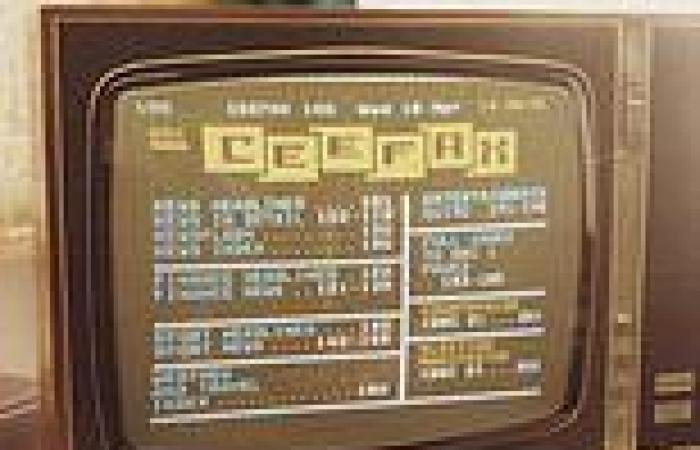Before the emergence of Twitter and 24-hour online news, the main way of finding out what was happening in the world came via newspapers and the radio.
But with the launch of the BBC's Ceefax – the world's first teletext service - in 1974, a quiet, colourful revolution began in a handful of British homes.
Developed by BBC engineers Geoff Larkby and Barry Pyatt two years earlier, the service exploited the unused capacity of a standard television signal to send information in text form instead of a moving picture.
Britons who could spare the then-hefty £700 cost (around £4,500 in today's money) of a new television capable of receiving it were now able to read the news, check the weather and keep up with sports results without having to wait for evening bulletins.
As new sets quickly became cheaper and other broadcasters launched their own teletext services, interactive TV - - dubbed 'super-tellies' by some - soon became ubiquitous.
At its peak in the early 1990s, Ceefax had 22million users who could access as many as 600 pages, whilst its main rival Teletext – which initially launched as Oracle on Channel 4 and ITV - boasted the hugely popular quiz game Bamboozle.
Teletext services began to decline in the mid-1990s with the increasing popularity of the internet and emergence of rolling news channels. Ceefax was discontinued when the analogue television signal was switched off in favour of digital-only broadcasts in 2012.
The Teletext service, which was also accessible on Channel 4 and Channel 5, had been stopped two years earlier.
However, millions of people around the country still remember the early days of interactive TV fondly.

Before the emergence of Twitter and 24-hour online news, the main way of finding out what was happening in the world came via newspapers and the radio. But with the launch of the BBC's Ceefax – the world's first teletext service - in 1974, a quiet, colourful revolution began in a handful of British homes

The service exploited the unused capacity of a standard television signal to send information in text form instead of a moving picture. Britons who could spare the then-hefty £700 cost (around £4,500 in today's money) of a new television capable of receiving it were now able to read the news, check the weather and keep up with sports results without having to wait for evening bulletins. Above: BBC employees operating the service
The BBC's engineers had initially developed Ceefax when they were looking at ways to provide subtitles for deaf people so that they could enjoy programmes.
It was then that they discovered it was possible to transmit full pages of text in the 'spare lines' generated on the analogue TV signal.
Ceefax's first editor was veteran journalist Colin McIntyre, who initially updated the 24 pages himself by feeding a yard-long punched tape into machines.
The tape would contain the information for a Ceefax page which had been typed out by journalists in the newsroom.
Its 1974 launch was initially a trial to test its success, with its wider lift-off coming in 1977 when the Government gave the service its seal of approval.
Whilst the need for a new television made Ceefax a minority interest at first, the fact that millions of Britons rented their TVs anyway – and so could easily upgrade them – meant that its uptake steadily grew.
The BBC further exploited Ceefax's growing popularity by using a selection of the service's






